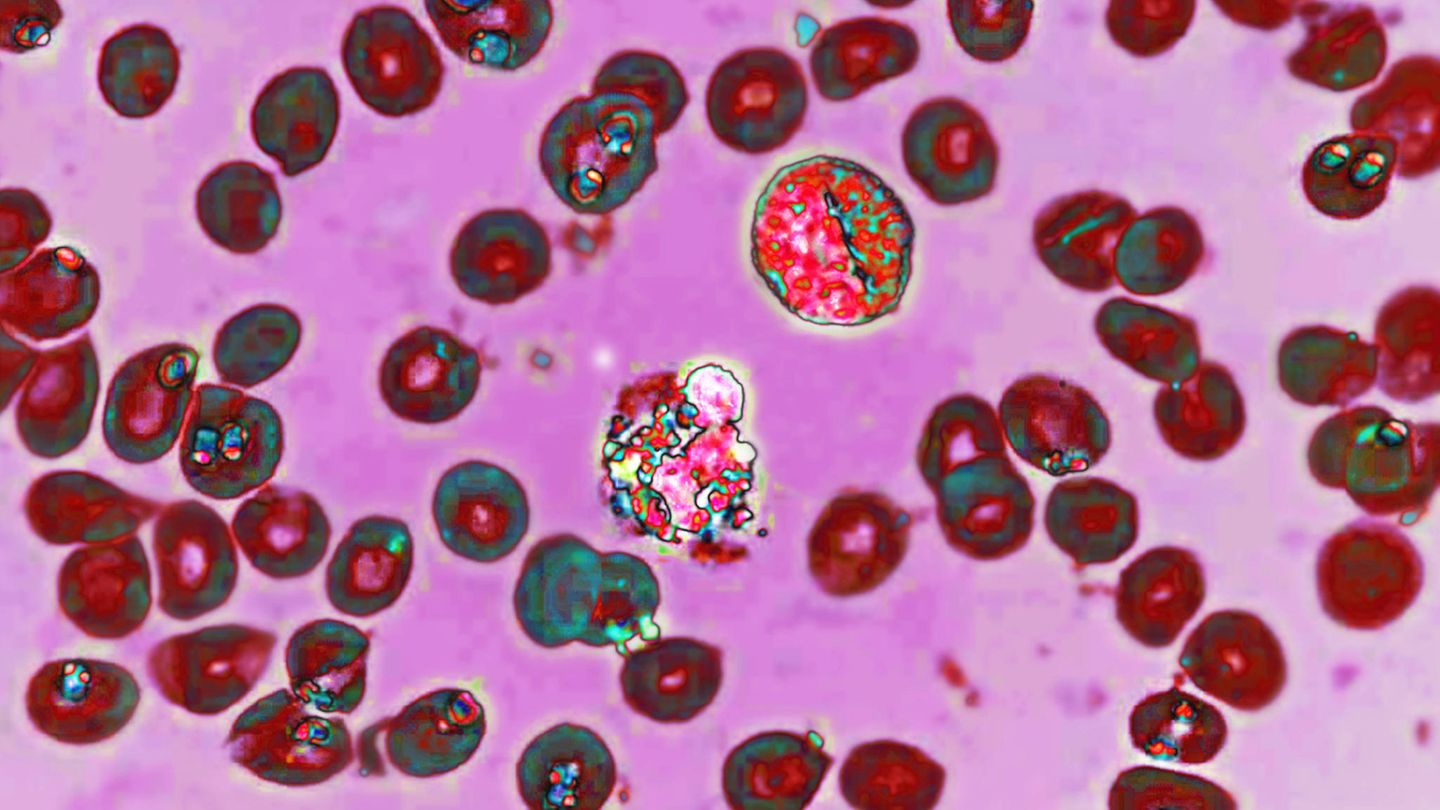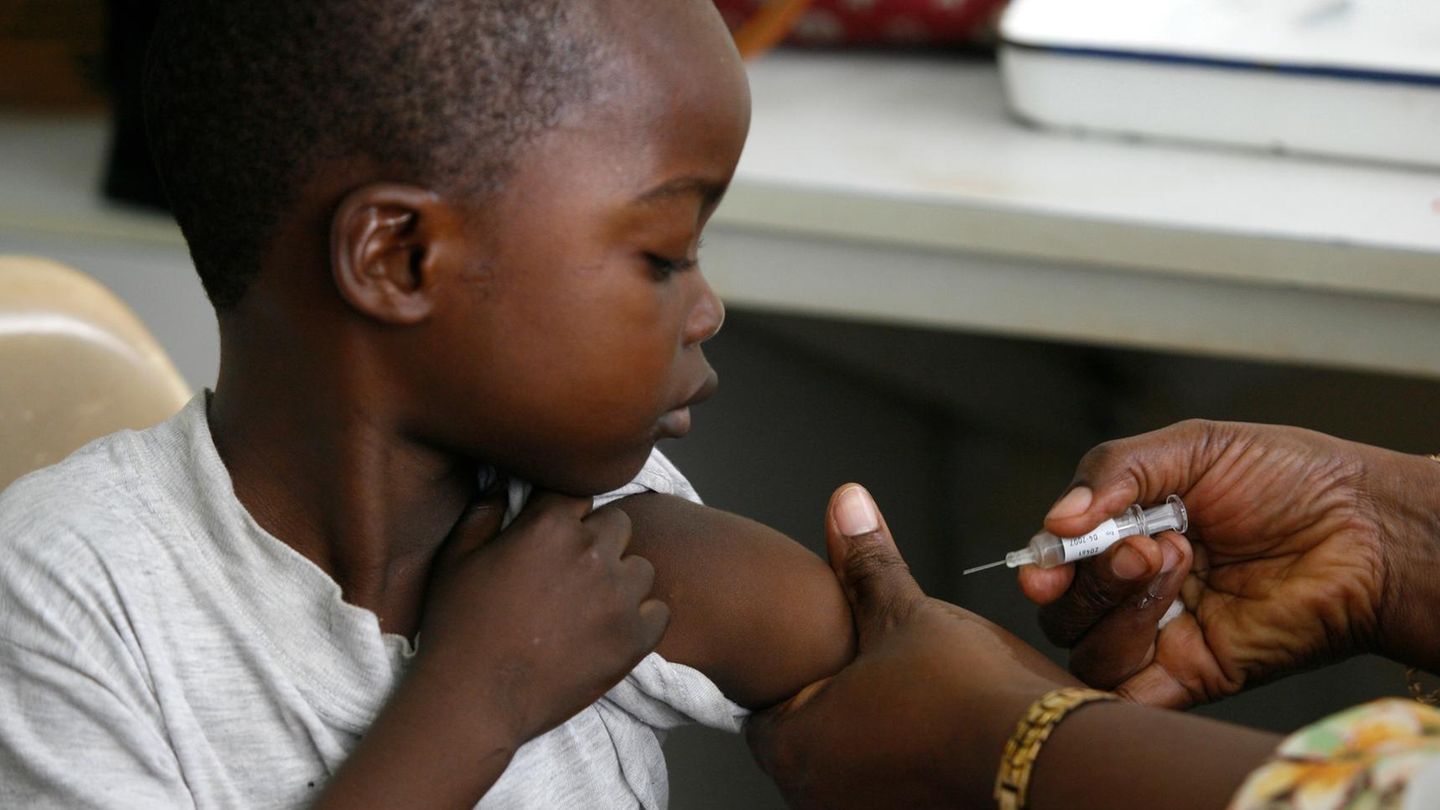USAID development aid
Trump’s payment stop threatens world health: “Everyone is afraid!”
Copy the current link
Add to the memorial list
AIDS, Polio, Hepatitis: Diseases that were almost defeated thanks to the USAI aids could spread again-if you think that is not concerned, it is huge.
“Everyone is afraid,” says Finn Jarle Rode, his voice trembles on the phone. “This is a turning point, and I don’t think we will soon be able to fix what is being destroyed.” The director of the “Hepatitis Fund” sits in Geneva, where there are several aid organizations. They all have only one in their heads: survive.
So far, the United States has been the largest payer for world health-but no longer under US President Donald Trump. At the beginning of February, he suspended the payments by the US Agency for Development Aid, USAID. Now the country’s supreme court has determined that Trump is not allowed to freeze the funds – but he can contest the decision, possibly a lengthy legal dispute. The money is already missing at all corners.
Finn Jarle Rode says that the “survival mode” prevails at aid organizations. “Every day, doctors and nurses from all over the world are calling me who are not only afraid of their own salary, but that the help on site is completely eliminated.”
More than 600,000 additional deaths in South Africa alone
Help for people with HIV. 25 years ago, an infection with the hi virus was equivalent to a death sentence. In 2003 then US President George W. Bush launched the Pepper (President’s Emergency Plan for AIDS Relief) program, thus paid HIV medication, building clinics and supported prevention programs. Pepper has saved around 26 million lives since its foundation. The money is now falling away-a death blow to HIV infected all over the world. With every day when Pepper cannot work, around 220,000 people do not receive their urgently needed treatment, including more than 7,000 children, the organization AMFOR estimates.
Linda-Gail Bekker, HIV scientist at the University of Cape Town, is making a dramatic calculation together with her colleagues: If the Peppermittels are not replaced, there could be around 565,000 additional HIV new infections in South Africa by 2034 and 601,000 other deaths, the researchers write in the “Annals of Internal Medicine”.
“If people no longer get medication that keep the virus in chess, they will die on a large scale,” says Olaf Müller, Professor of Global Health in Heidelberg. “In 2004, at the darkest times of AIDS epidemic, there were 2.1 million AIDS deadlines in one year.” However, this is not the only point that worries the expert. “We will see resistance developments that can make our medication unusable.” And at some point this would also be felt in other countries whose therapies suddenly no longer worked. In the United States alone, that is more than a million people.
This happens if vaccinations are only exposed to briefly
Probably the most common mistake when it comes to the USASID payment stop: it not only affects remote villages in developing countries-but also all western countries. Finn Jarle Rode, who combats the worldwide hepatitis viruses, says: “This will also catch up with everyone who thinks that these regions of world regions have nothing to do with us. The waves of illness will soon reach Europe.”
Even almost defeated diseases such as Polio could flare up again. The triumphal march against the fearsome disease even started in the United States. When the American Jonas Edward Salk was the first to develop a functioning vaccine against the dreaded poliomyelitis (children’s paralysis), he was celebrated as a hero. The disease rate in the United States suddenly fell by over 80 percent. In 1988, the World Health Organization WHO set itself the goal of completely exhausting Polio. Herring countries like the United States invested more than $ 20 billion in the Global Polio Eradication Initiative (GPEI). The global community managed to bring polio to the brink of extermination. The number of polio falls decreased by more than 99 percent, 1.5 million lives were saved, 20 million people who would otherwise have been paralyzed can run.
Without a USA: Does Polio come back?
What happens if these vaccinations are only exposed to briefly can be observed, especially in war areas. During Syria’s civil war in 2011, the first polio infections were soon reported. Polio came back in Nigeria. In Yemen and also in Sudan. Last summer it was finally time in Gaza: when a baby suffered a polio in mid -August, the concerned aid organizations started a large -scale vaccination campaign for hundreds of thousands of children. Because every flare -up of the disease can lead to the virus spread in other countries.
Even Germany is not immune to an outbreak. More than twenty percent of the two -year -olds in Germany are not adequately protected: even after 24 months, these children have not received all three intended vaccinations.
Everything is now about a crucial question: How can we prevent medical achievements that have saved millions of human lives within a few months?
One thing is clear: the gaps that Trump’s stopping money has torn into development aid must be stuffed. If the USASID payments are not possible despite the legal dispute, the countries concerned can hardly compensate for them alone. About 85 percent of the US funds for global health flowed into programs for African countries. In 2023, Ethiopia was the largest recipient of USAI funds in Africa ($ 1.37 billion), followed by Somalia ($ 973 million). In third place was the Democratic Republic of Congo ($ 943 million). Suddenly pay yourself? Something like that doesn’t go overnight. In Somalia, for example, US aid has so far accounted for 25 percent of the total state budget. In Tanzania, the United States financed most of the public health care. In addition, it is not just about money alone: Aid programs such as USAID also supported logistically, sent technically trained employees, organized humanitarian flight operations, delivered medication at discounted prices. Even if one of the affected countries suddenly had more money, it could no longer buy medication at the low prices. Building new structures often takes years.
After the United States, it is especially Germany that co -financed worldwide help. But instead of increasing expenses, the federal government is currently on austerity course: In the past year, it decided to halve the budget for humanitarian aid for 2025.
China’s interest in Africa
Other European countries also decide in a similar way: Britain recently reduced its auxiliary budget by 40 percent, France by 37 percent. The Netherlands by 30 – they want to redirect the funds to projects that “serve directly to the Dutch interests,” it said. Fewer foreign aid, instead often more money for defense. Overall, the money is missing to fill all financial gaps that have left the United States, EU foreign commissioner Kaja Kallas said in an interview with the Enr news agency network. However, under one condition, the EU wants to compensate for payments in selected cases: the recipients should clearly show that they are supported by the EU. So help in exchange against geopolitical power. This is how China does it.
These are the most dangerous infectious diseases of the world

Malaria is one of the most important tropical diseases in the world. It is plasmodium by the unicellular body of the genus caused. About 40 percent of the world’s population live in areas where malaria occurs regularly. Every year around 200 million people are infected with the pathogen, around 600,000 people die from malaria. Most of them are children under the age of five
© Imago
More
Open the image subtitle
Back
Further
“Of course, China is now happy to go into this gap that the USA is now leaving,” says Global Health Professor Olaf Müller. “The country is hoping for better conditions for economic cooperation with the countries of the African continent.” On the way to the superpower, development aid for China is a welcome “Soft Power” instrument. The country is already financing infrastructure projects in African countries – preferably in those with strategic ports or material reserves. The United States itself delivered the template for strategic help: USAid was founded in the middle of the Cold War against the Soviet Union.
Another option: private initiatives. One of the largest donors is the Gates Foundation, founded by Microsoft billionaire Bill Gates. In 2023 it was $ 1.86 billion that the philanthropic provided. His foundation also worked with the USA, financed, among other things, health research and the Gavi vaccination. Just recently tried to dissuade Gates Trump at a meeting from the payment stop. The foundation has already warned that it cannot close the gap, leaves the USAID.
What if a pandemic comes?
“No foundation and no merger of foundations can offer financial resources, labor, specialist knowledge or leadership role, which in the past have been provided by the United States in combating deadly diseases and in the containment of hunger and poverty in the world,” says Rob Nabors, North America director of the Gates Foundation, the star.
How devastating the US back is from global health care could be shown much faster than we would like. “What if this bird flu virus leads us to the next pandemic with millions of deaths?” Asks Müller. “Then the world has to stick together and pull together. With today’s United States that have got out of the WHO, this will not work.”
World Health – this is becoming increasingly apparent – is like a fragile structure. Whether the domino effect can still be stopped will be shown in the next few months. The new decision of the Supreme Court does not oblige the Trump government to immediately make payments for foreign aid. But it paves the way to force these payments. That should at least give many of those affected a little hope.
Source: Stern
I’m Caroline, a journalist and author for 24 Hours Worlds. I specialize in health-related news and stories, bringing real-world impact to readers across the globe. With my experience in journalism and writing in both print and online formats, I strive to provide reliable information that resonates with audiences from all walks of life.




